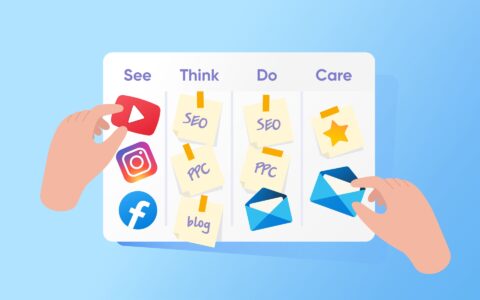Understanding SEO Basics, Part 3: On-page Optimization Techniques
Have you ever considered creating content that works for search engines and users? Well, it's definitely possible by using on-page optimization techniques.
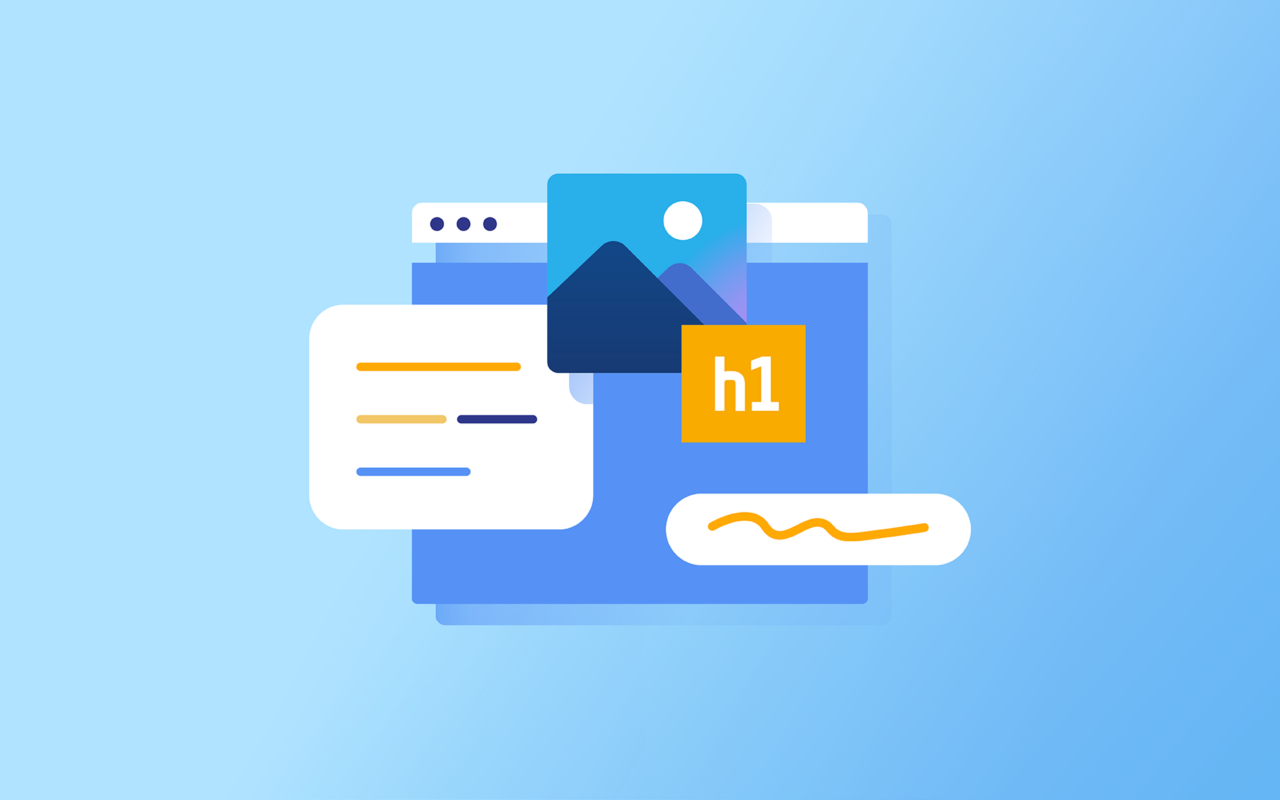
In this third article of our SEO Basics series, we'll show you how to optimize your content to target specific keyword(s) and keep readers engaged.
In the previous parts of this series, we discussed the fundamentals of search engine optimization and a hands-on approach to finding the right keywords for your content.
Now, get ready to add more tricks to your SEO toolbox. Let’s explore the essentials of on-page optimization techniques!
Table of Contents:
Overview of On-page Optimization
1. Create High-quality Content
2. Craft Irresistible Headlines and SEO Titles with Captivating Descriptions
3. Use Header Tags To Break Up Your Content into Sections
4. Add Relevant Images and Image Alt Texts
5. Optimize URLs, and Include Relevant Internal and External Links
Conclusion and Future Topics
Overview of On-page Optimization

Do you know that in the early days of search engines, content creators could get away with "keyword stuffing"? However, this tactic caused trouble for them as search engines evolved and prioritized providing a better user experience.
Now, keyword stuffers suffer greatly.
According to Google, keyword stuffing is “the practice of filling a web page with keywords or numbers in an attempt to manipulate rankings in Google Search results.”
Google went further to explain a common example of keyword stuffing as “repeating the same words or phrases so often that it sounds unnatural.”
Are you tired of keyword stuffing and want to create engaging content that is optimized for search engines and relevant to readers?
Then follow these five on-page search engine optimization strategies.
1. Create High-quality Content

- Perform keyword research to determine your readers' needs rather than what you assume they need.
- Thoroughly research the topic before writing by exploring what other authority websites have covered. Based on the research, create an outline that includes the headings (H2, H3, etc.) for the content.
- To develop your content, focus on delivering informative content while including keywords naturally, based on the outline.
- To ensure your content is free of grammatical errors, utilize tools such as Grammarly for proofreading. Also, avoid copying (plagiarizing).
2. Craft Irresistible Headlines and SEO Titles with Captivating Descriptions
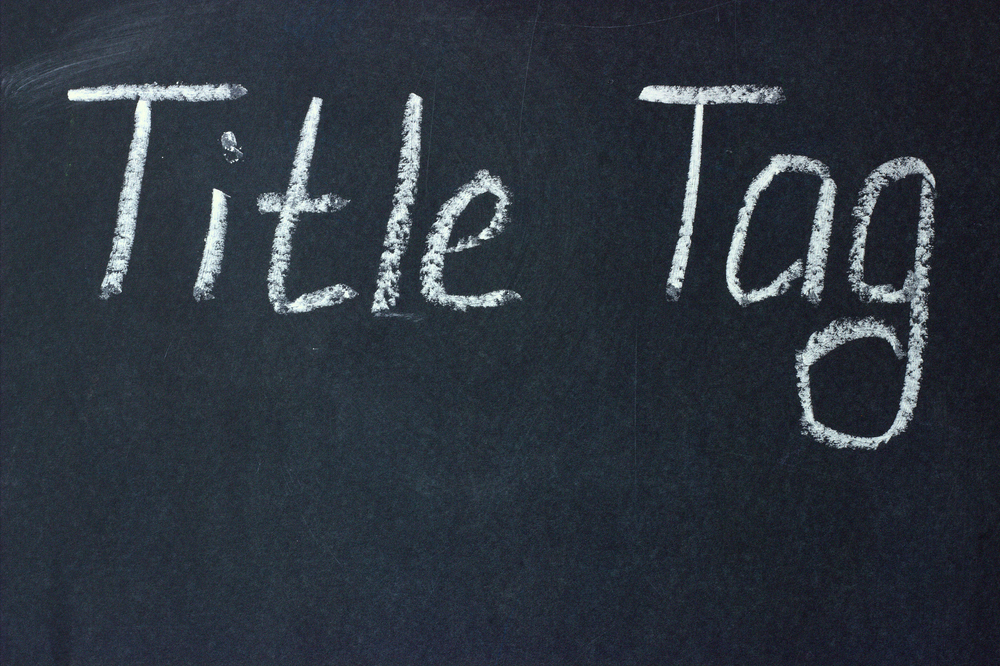
As a website content writer, your job is to use words to capture and maintain your readers' attention. One effective method to accomplish this is through your content headlines.
Words matter greatly in this regard, and it is important to ensure that your headlines are crafted skillfully to convey your message and engage your readers.
When readers arrive at your webpage, the first thing they see is the content title. However, to entice potential readers to click on your article on search engine result pages, you need to create compelling SEO titles and descriptions.
The title that users see when search engines return search results is known as an SEO title, which may differ from your content's title. Beneath the SEO title is the description.
See the screenshot below for details.
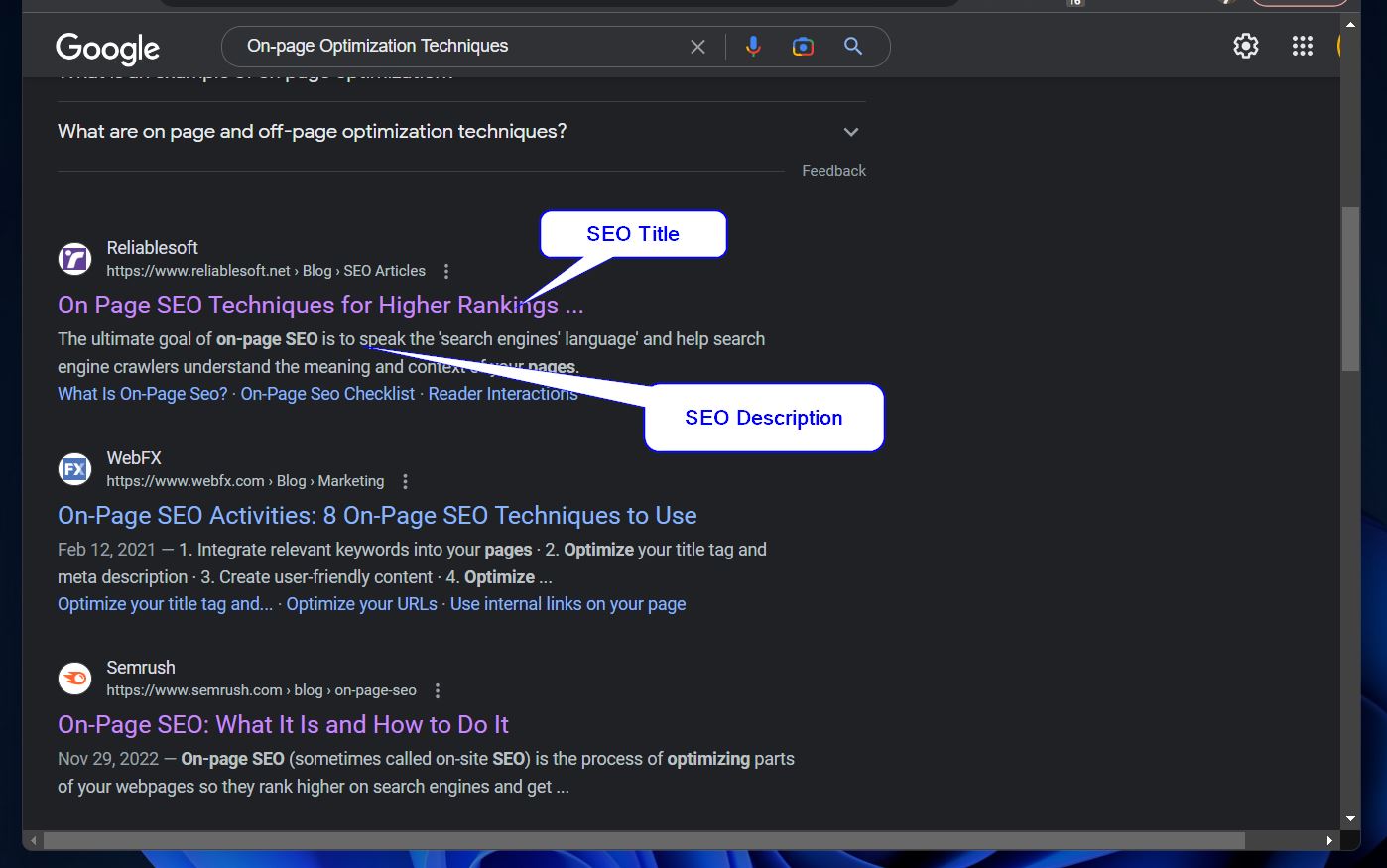
3. Use Header Tags To Break Up Your Content into Sections
In the previous section, I highlighted the significance of titles. However, besides the primary title, breaking down your content into sections is equally important.
To optimize your blog content, it is crucial to divide it into sections with the use of heading tags. Usually, the article's title is assigned the H1 tag, making it the topmost in the hierarchy.
To further break down your content into smaller chunks, section headings should have H2 tags, and if needed, H3 tags can be used for subsections.
Organizing your content in this way benefits both your readers and search engine bots.
To start with your readers, smaller blocks of information can keep their attention and reduce boredom. For search engines, header tags assist them in understanding your content.
In addition to the points already discussed in this section, other content optimization strategies improve search engine ranking and user experience.
For instance, you should write shorter sentences and paragraphs while also incorporating transition words into your writing. Additionally, you should present your keywords in different word forms and utilize keyword synonyms within your article.
4. Add Relevant Images and Image Alt Texts
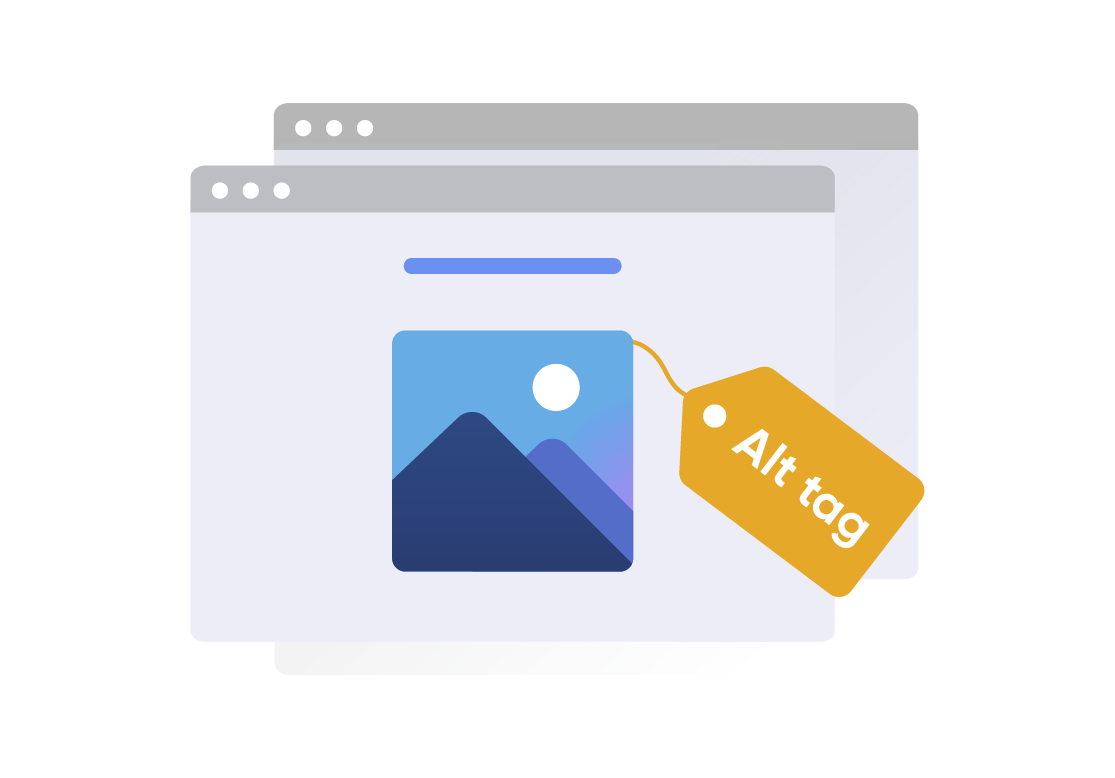
We strategically placed images in sections of this article because we understand the importance of visuals to humans. Adding images to your content is an important on-page optimization tactic, and we have three mind-blowing statistics that will convince you.
These statistics will provide more convincing evidence of the importance of adding images to your content:
- On average, web content with visuals such as images or videos receives up to 94% more views.
- The use of images in articles results in a 650% higher engagement rate.
- Visuals increase people's ability to follow instructions by 323% compared to written instructions.
Although images are great, they cannot be read by search engines.
Therefore, to assist search engines in comprehending the content of your images, it is crucial to include your keywords or their synonyms as Alt Texts. Additionally, you should include other image metadata.
5. Optimize URLs, and Include Relevant Internal and External Links
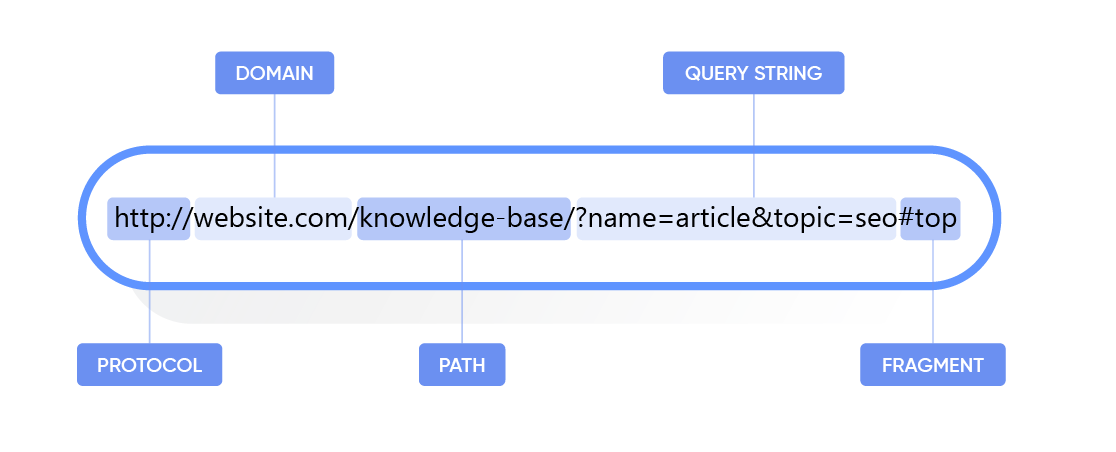
The URL structure of your content is an important on-page optimization method, even if it may not seem like it. According to Google’s Simple URLs convey content information, and URLs are displayed in search results pages, to optimize your URLs, follow these guidelines:
- First, use descriptive URLs with words rather than numbers and special characters. Avoid URLs like /public-folder/120934/0545. Instead, use friendly URLs like /category/technology-explained/what-is-a-lan-cable.
- Second, use short URLs and include words relevant to your content. In other words, include your target keywords in your URLs.
- Third, avoid using generic words and repeating the same words multiple times in your URL. For example, do not use /page10 in your URLs.
- Finally, avoid complex directory or category structures. If a URL structure is too complex, it is difficult to remember, especially for other content creators who want to link to your article.
In addition to optimizing your content URLs’ structure,
including relevant internal and external links is crucial for your content.
Google's robots crawl sites by following links. Therefore, a page with many links indicates to search engines that the page is significant.
Moreover, internal links help search engines, and users navigate your site. Thus, it's important to include thoughtful and relevant internal links when crafting your content.
Another important content linking strategy is to use external links. Adding links from authoritative sites increases the credibility of your article and website.
Conclusion and Future Topics
In conclusion, on-page optimization is a crucial component of SEO that significantly impacts your website's visibility and ranking on search engine results pages.
You can enhance your website's on-page SEO and improve its overall performance by implementing the techniques discussed in this article. These techniques include creating high-quality content, crafting irresistible headlines, using header tags, and optimizing URLs.
Moving forward, in the next part of this SEO series, we will delve into off-page optimization techniques. These techniques can further boost your website's authority and visibility, including building high-quality backlinks and other off-page elements.
Then, in the final article of the series, we will explore how to measure and track the success of your SEO efforts. This includes using tools like Google Analytics 4 and Google Search Console.
With a comprehensive understanding of both on-page and off-page SEO techniques and the ability to track and monitor performance, you can successfully achieve your digital marketing goals.
By driving more traffic to your website and improving your website's ranking, you can create a strong online presence and boost your revenue.
Good luck!






